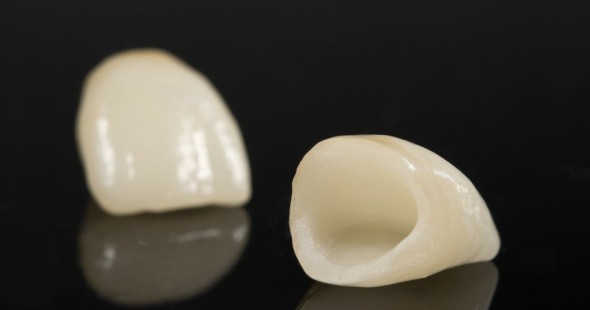Zirconium dioxide crowns
Our dental laboratory offers dental clinics and private dentists services for the manufacture of zirconium dioxide crowns using CAD/CAM technology. This incredibly durable material has been used in dental practice for about 20 years, and during this time it has managed to prove itself in the best way. Modern computer technologies are used to create zirconium crowns, which ensures high quality and absolute accuracy of fit.
Features of zirconium crowns:
- Crowns are indistinguishable from natural teeth. This effect is achieved due to the similar light transmission of the materials used.
- The unique strength allows them to be used equally successfully for both front and chewing teeth. The service life of such crowns is about 20 years and can be further extended with proper care.
- They have hypoallergenic and hygienic safety. The materials used in the manufacture of zirconium crowns do not contain substances in their composition that cause individual intolerance.
- They do not change color and retain an aesthetic appearance during the entire period of operation.
- They allow you to save your own teeth. When installing the crown, no strong turning and removal of pulp is required.
- Perfectly match the parameters of the patient’s jaw, providing comfort in wearing and protection from the penetration of the smallest particles of food.
- The only disadvantage is a fairly high price. This is due to both the cost of the materials used and the complexity of the technologies.
Zirconium crowns are recommended
- In the presence of organic disorders in the hard tissues of the tooth;
- If a patient wants to keep the front teeth alive;
- In the absence of several chewing teeth
- With disorders of the endocrine and other systems, when prosthetics by alternative methods is impossible.
Contraindications
- Bruxism (night gnashing of teeth);
- Overbite
- Pregnancy.
The production of zirconium dioxide crowns is carried out using high-precision CAD/CAM technology. Based on the impression made by a dentist, a model is performed. It is scanned in a 3D scanner and the received data is transmitted to a computer, where a 3D sample of a two-layer structure consisting of a zirconium frame and ceramic cladding is created based on the scan. Next, the computer model is loaded into the milling machine. The latter, without human intervention, makes a frame of zirconium dioxide, which is first fired for strength, and then covered with a ceramic mass and re-placed in the furnace. Thanks to full automation, errors in the manufacture of zirconium crowns are completely excluded.



